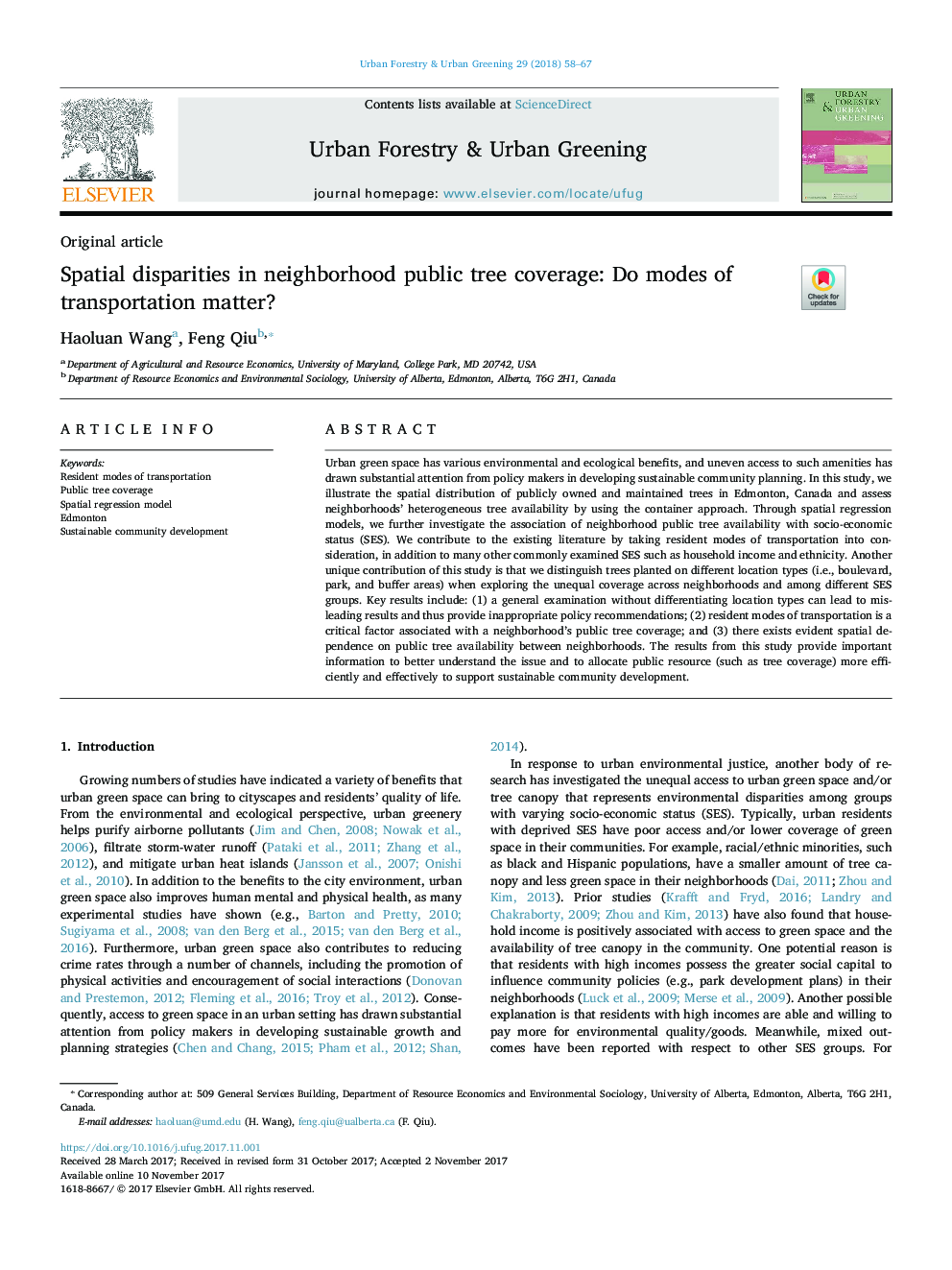| Article ID | Journal | Published Year | Pages | File Type |
|---|---|---|---|---|
| 6549394 | Urban Forestry & Urban Greening | 2018 | 10 Pages |
Abstract
Urban green space has various environmental and ecological benefits, and uneven access to such amenities has drawn substantial attention from policy makers in developing sustainable community planning. In this study, we illustrate the spatial distribution of publicly owned and maintained trees in Edmonton, Canada and assess neighborhoods' heterogeneous tree availability by using the container approach. Through spatial regression models, we further investigate the association of neighborhood public tree availability with socio-economic status (SES). We contribute to the existing literature by taking resident modes of transportation into consideration, in addition to many other commonly examined SES such as household income and ethnicity. Another unique contribution of this study is that we distinguish trees planted on different location types (i.e., boulevard, park, and buffer areas) when exploring the unequal coverage across neighborhoods and among different SES groups. Key results include: (1) a general examination without differentiating location types can lead to misleading results and thus provide inappropriate policy recommendations; (2) resident modes of transportation is a critical factor associated with a neighborhood's public tree coverage; and (3) there exists evident spatial dependence on public tree availability between neighborhoods. The results from this study provide important information to better understand the issue and to allocate public resource (such as tree coverage) more efficiently and effectively to support sustainable community development.
Related Topics
Life Sciences
Agricultural and Biological Sciences
Forestry
Authors
Haoluan Wang, Feng Qiu,
